History/Temples
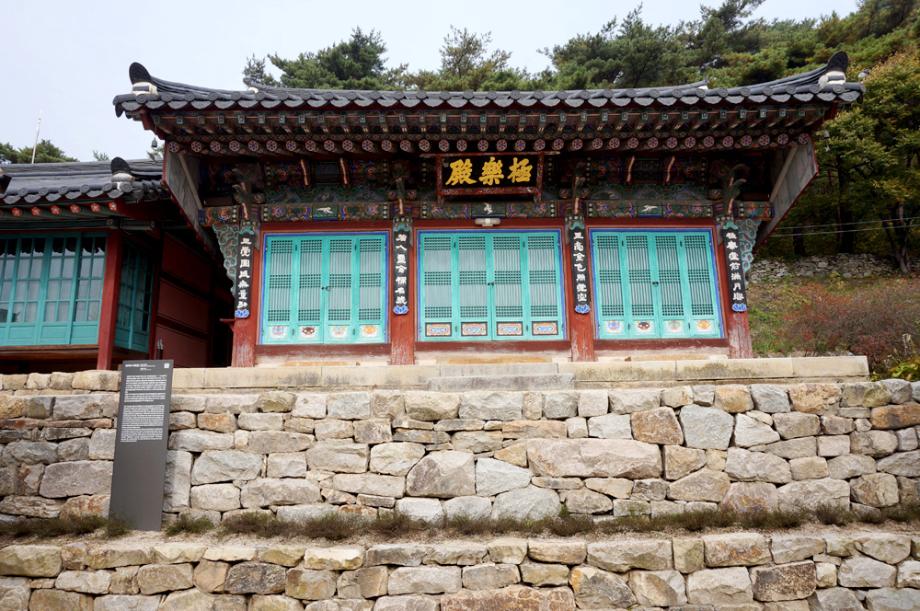

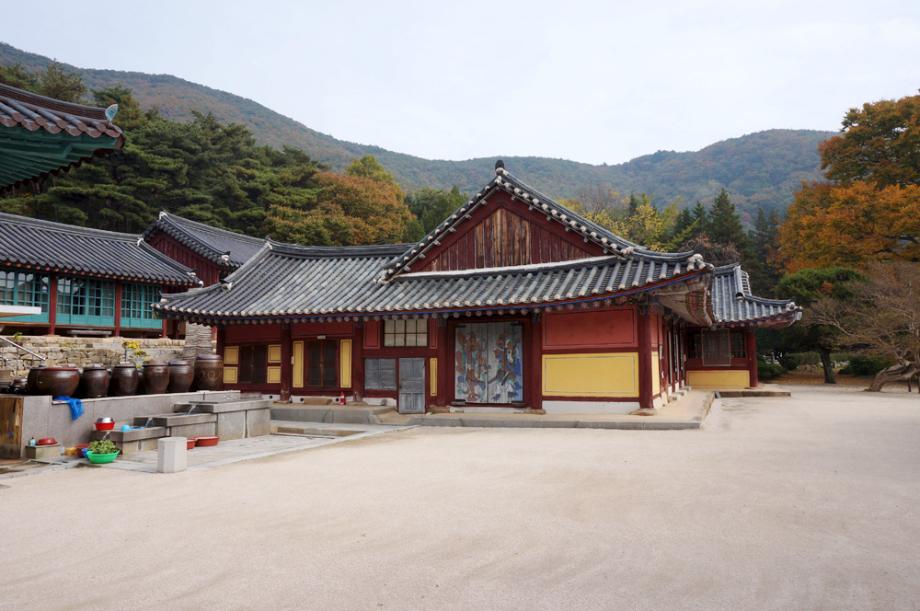
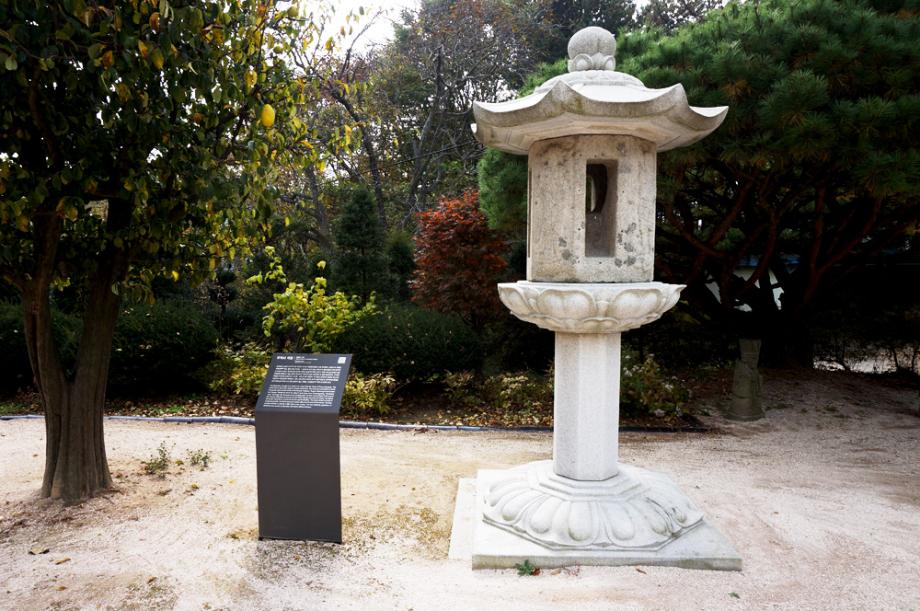
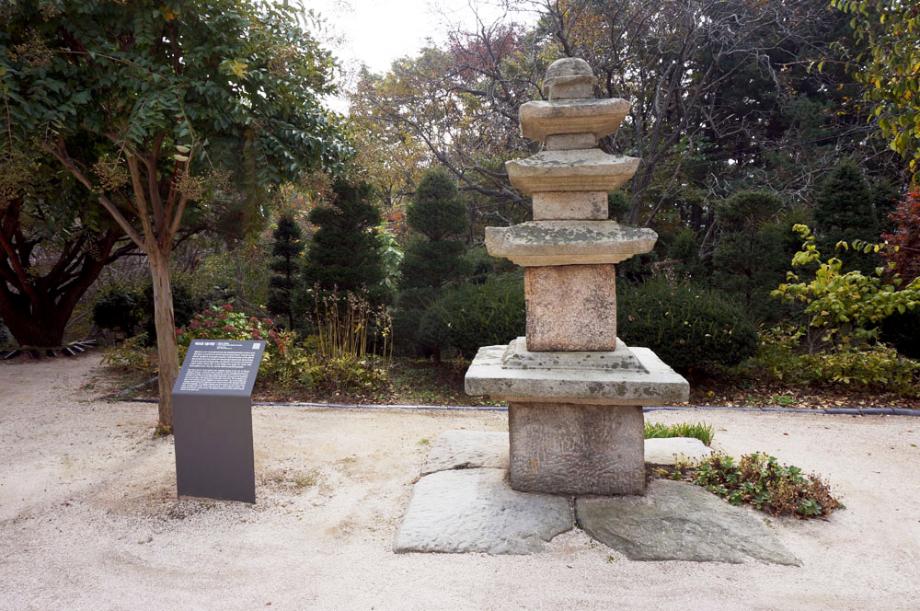
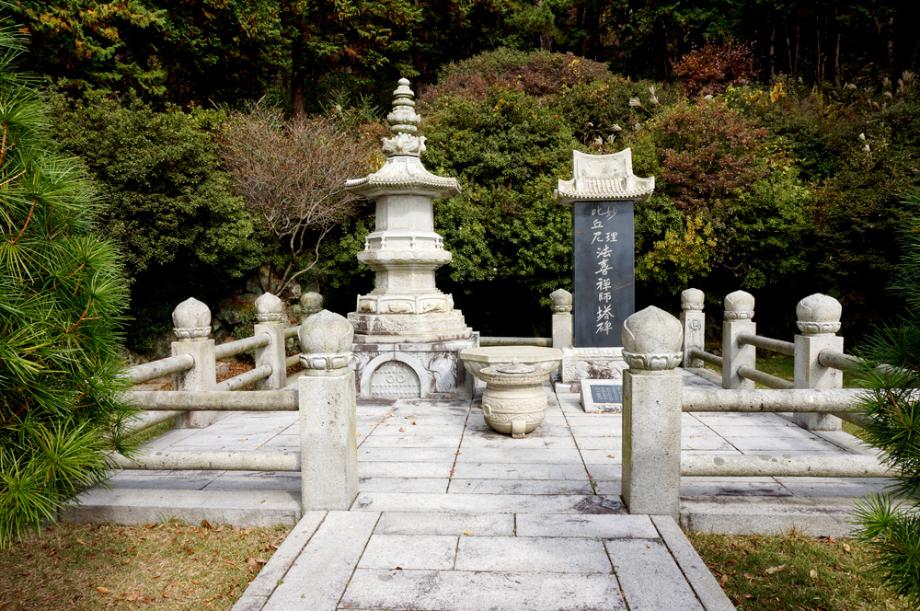
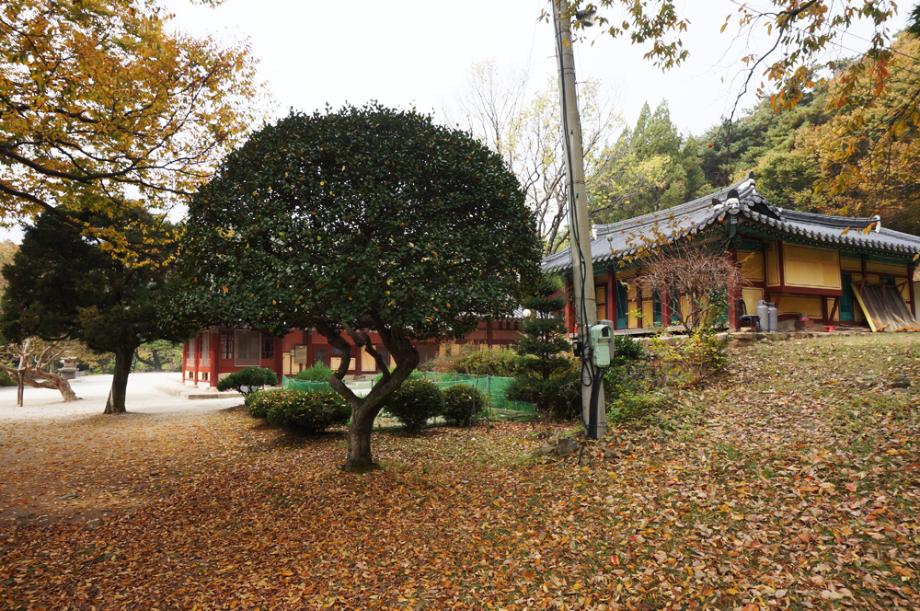
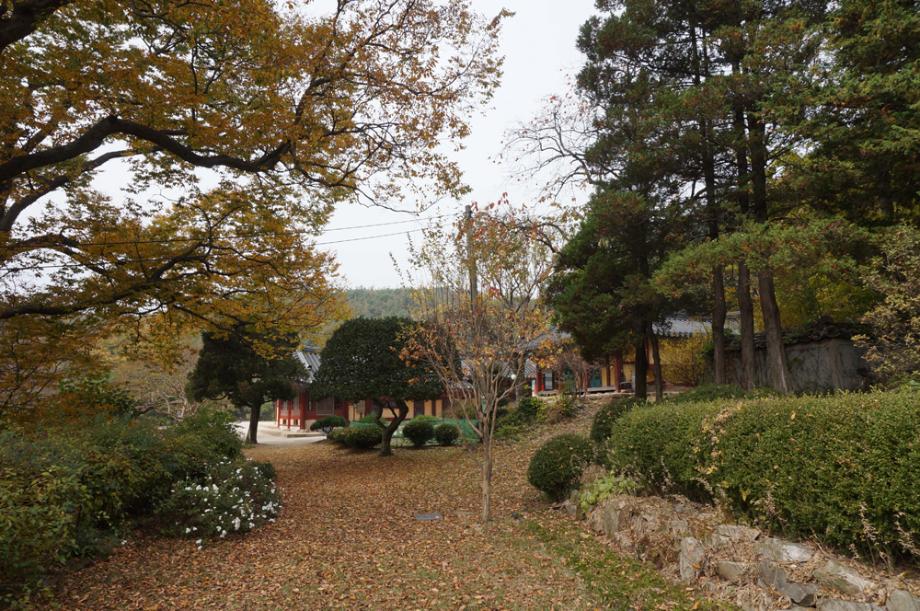
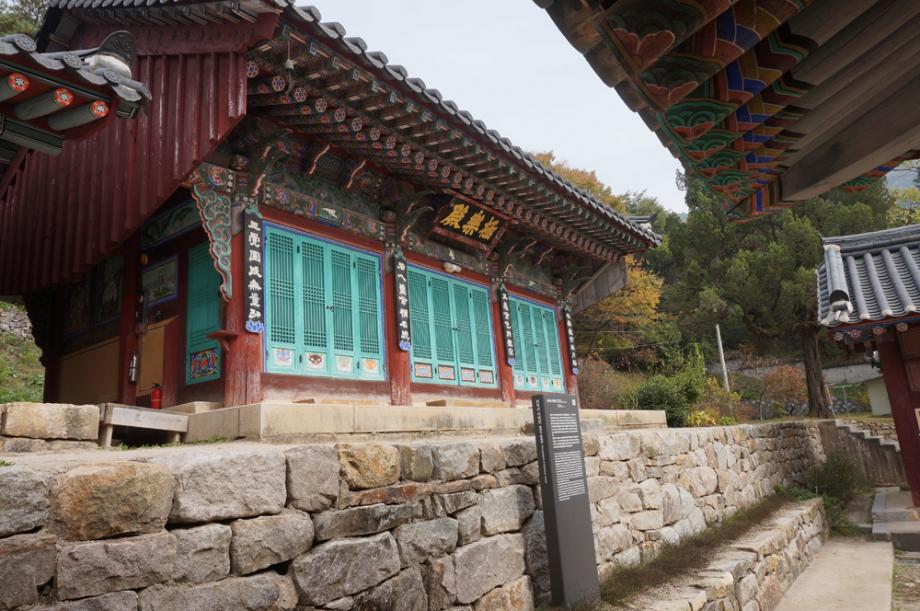
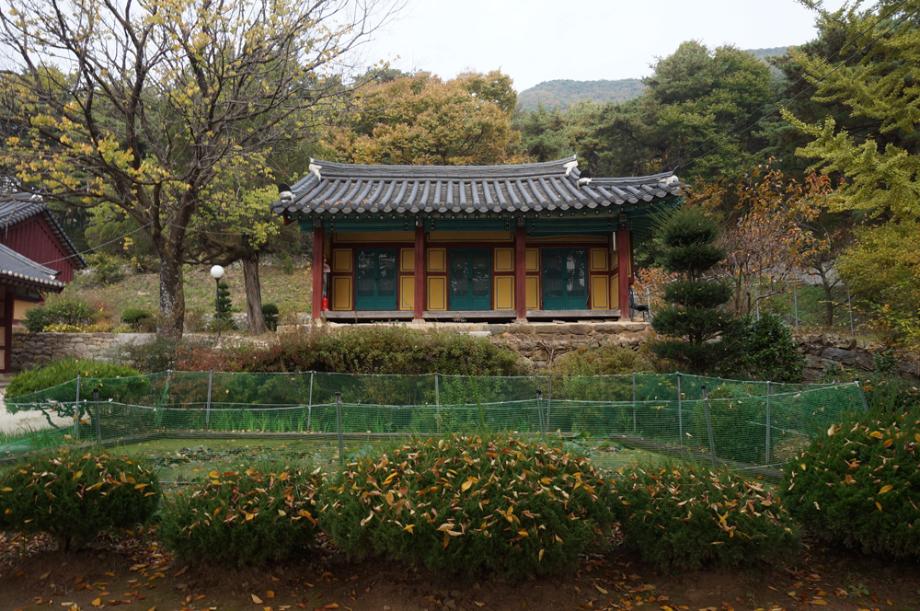
Address : 400-74, Gayasan-ro, Deoksan-myeon, Yesan-gun, Chungcheongnam-do
Phone : Bodeoksa Temple 041-337-4350
There had been a Buddhist temple called Gayasa on the present-day site of the Tomb of Prince Namyeon, but Heungseon Daewongun (Prince of Heungseon), who was convinced by the feng shui theory that the heart of the temple, or the location of the gold pagoda, was an auspicious place where two generations of kings would be produced, ordered two monks from Magoksa, the head temple among the temples in the Chungcheongdo Province during the Joseon Dynasty, to burn down Gayasa.
He then tore down the gold pagoda built by Naonghwasang during the Goryeo Dynasty and moved his father’s tomb there from Namsongjeong of Yeoncheon in Gyeonggi-do Province.
Daewon-gun, who was haunted by the guilt of burning down Gayasa, inherited Gayasa when his son, King Gojong, the 26th King of Joseon, ascended to the throne, and built a new temple on the southern foot of Seounsan Mountain to the east of Gayasa in 1871 (the 8th year of King Gojong’s reign). He named it Bodeoksa Temple in atonement to seek forgiveness from the Buddha.
- Geungnakjeon Hall
Designated as a Tangible Cultural Property No. 145 (Oct. 7, 1995) by Chungcheongnam-do Province, Geungnakjeon Hall (Paradise Hall) has a two-story Seobyeoldang (West Annex) to its left, the Abbot’s Office in front, and the Dongbyeoldang (East Annex) to the right, with a pond on the farthest right. Geungnakjeon has a gable roof with double-layer eaves.
- Stone Lantern
Designated as Tangible Cultural Property No. 183 (May 7, 1984) by Chungcheongnam-do Province, the octagonal stone lantern that is 1.2 m tall is made of granite, with windows present on alternating levels. On the faces where there are no windows, the images of the four heavenly kings are carved.
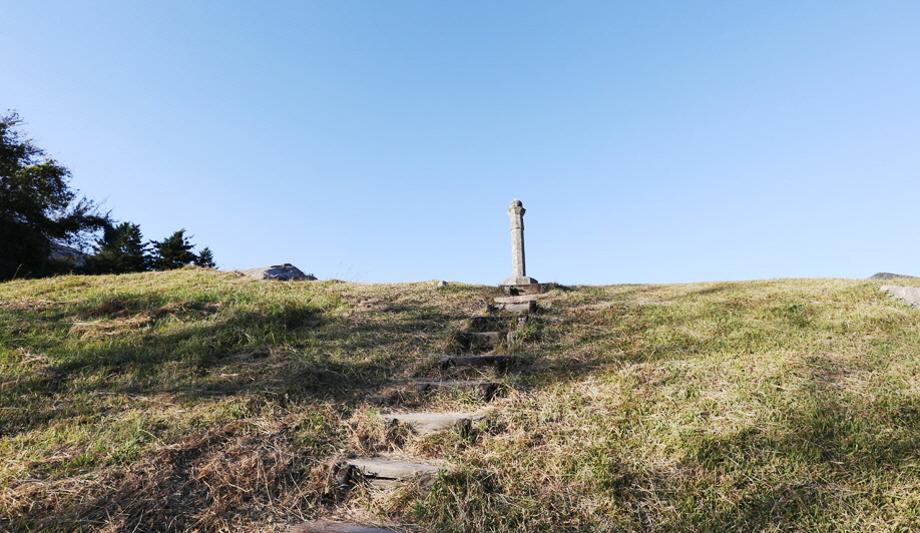
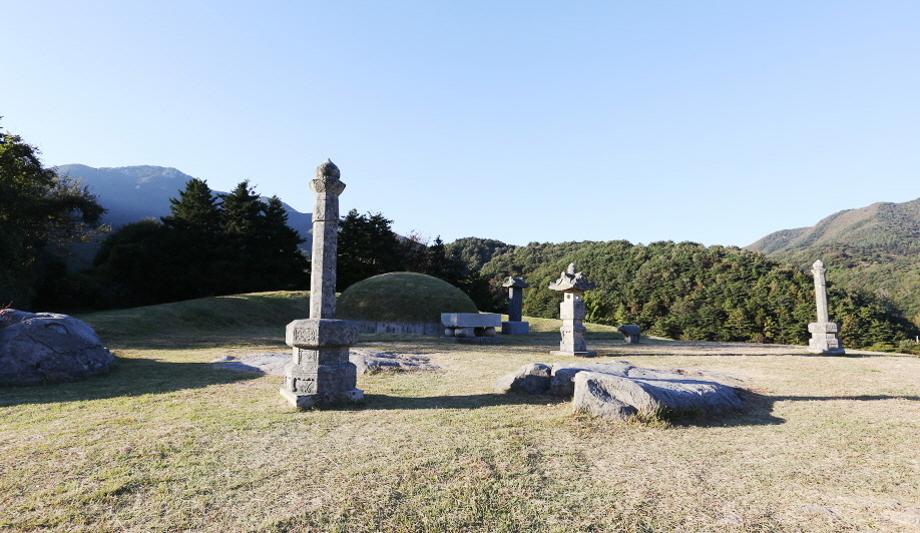
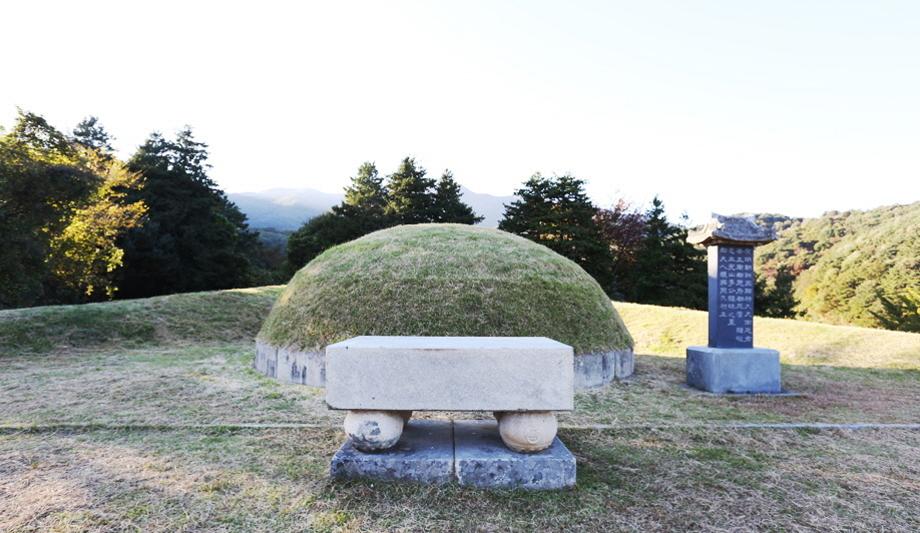

Address : 401, Gayasan-ro, Deoksan-myeon, Yesan-gun, Chungcheongnam-do
Phone : Yesan Tourist Information Center 041-339-8930
This is the tomb of Prince Namyeon, the father of Heungseon Daewongun. It used to be where Gayasa, which was the largest temple in the Gayasan Mountain area during its days, was located.
Heungseon Daewongun moved his father’s tomb from Namsongjeong of Yeoncheon in Gyeonggi-do Province to this location because it was said to be a place where two generations of kings would be produced, as there was a “blue dragon on the left and a white tiger on the right.” The ambitious prince, who had suffered many humiliations from the Andong Kim clan, used this as an opportunity to ascend to the throne.
Heungseon Daewongun thus had Gayasa Temple, which had 99 hermitages, attesting to its grand size, burned down, demolished the gold pagoda, and moved his father’s tomb here. Fearing of looting in the future, he poured ten thousand tons of molten iron and created a tumulus. The place where the tomb was temporarily located is called “Gugwangji” and it is still depressed today. There is also a stone lantern in front of the tomb with the inscription “Idaecheonjaji (in reference to the two generations of kings).”
Following the Ernst Oppert’s excavation incident 1868 and the fall of the Jeonju Yi clan, the tomb was desolated, but because it was a royal tomb, it has been well preserved by later generations.
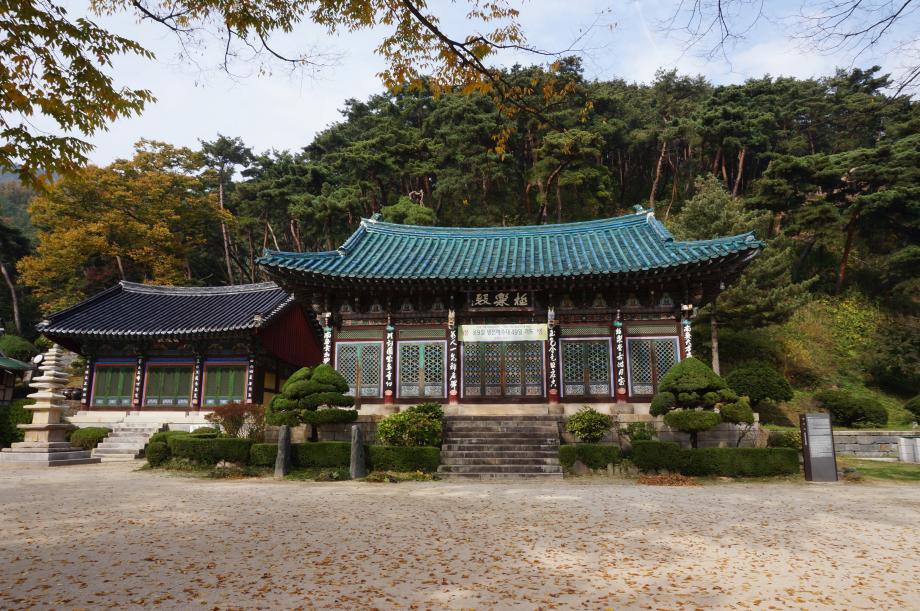
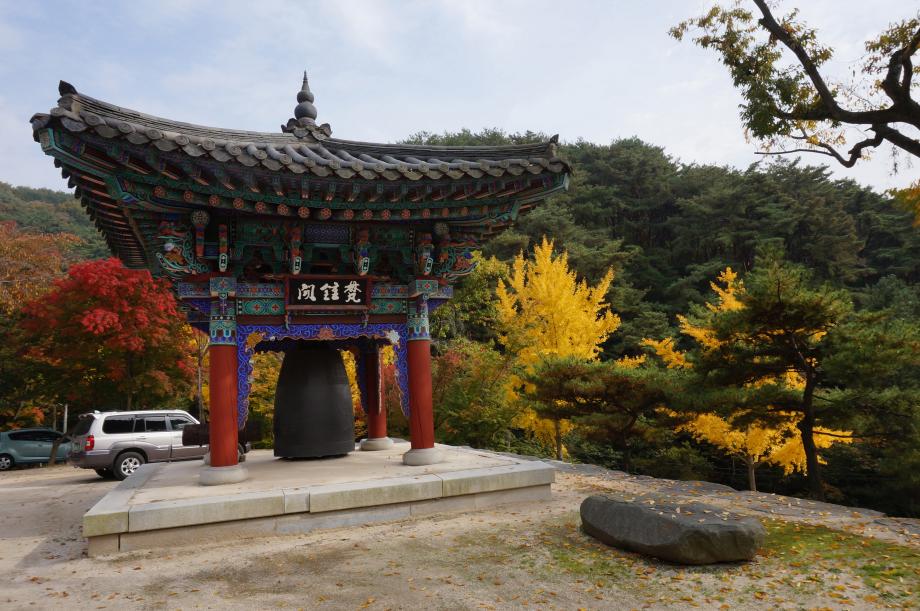
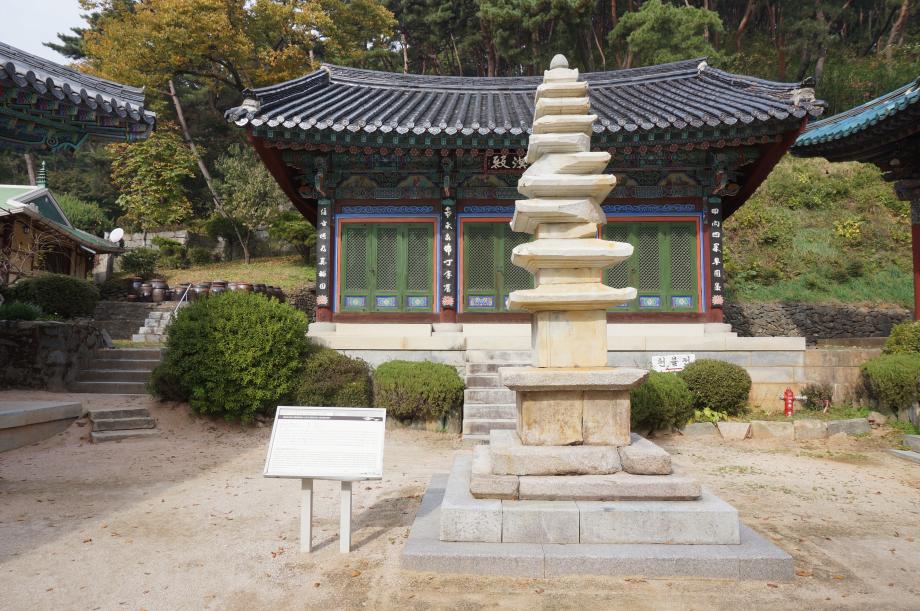
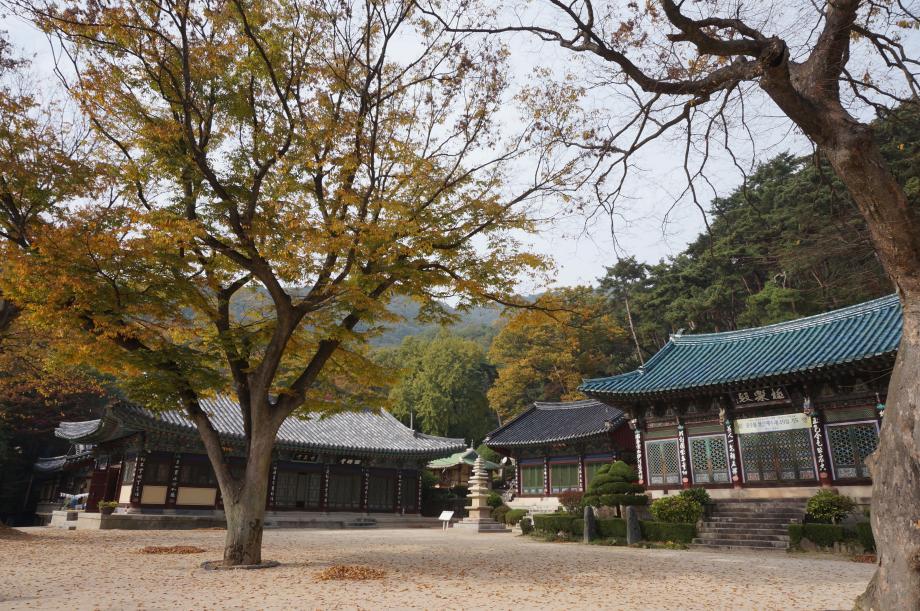
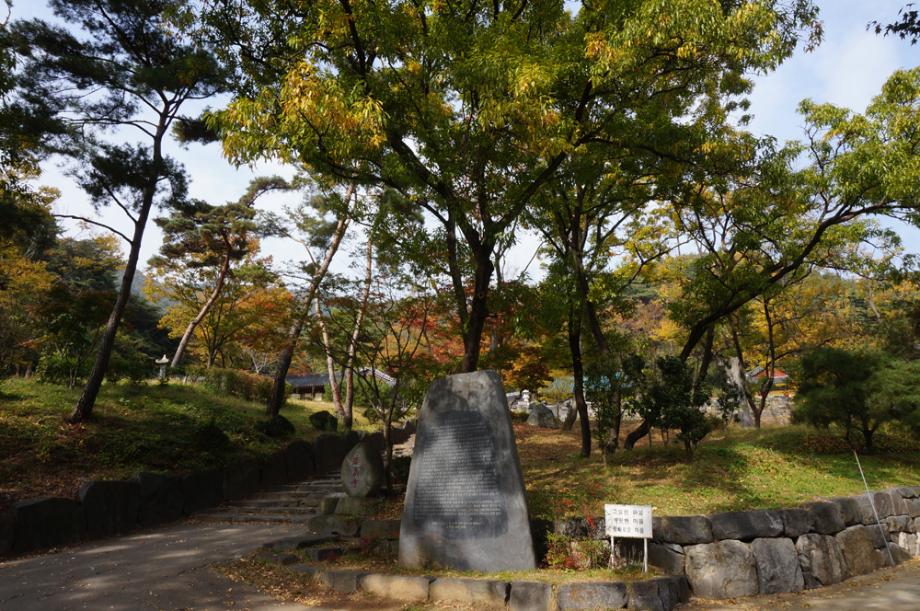



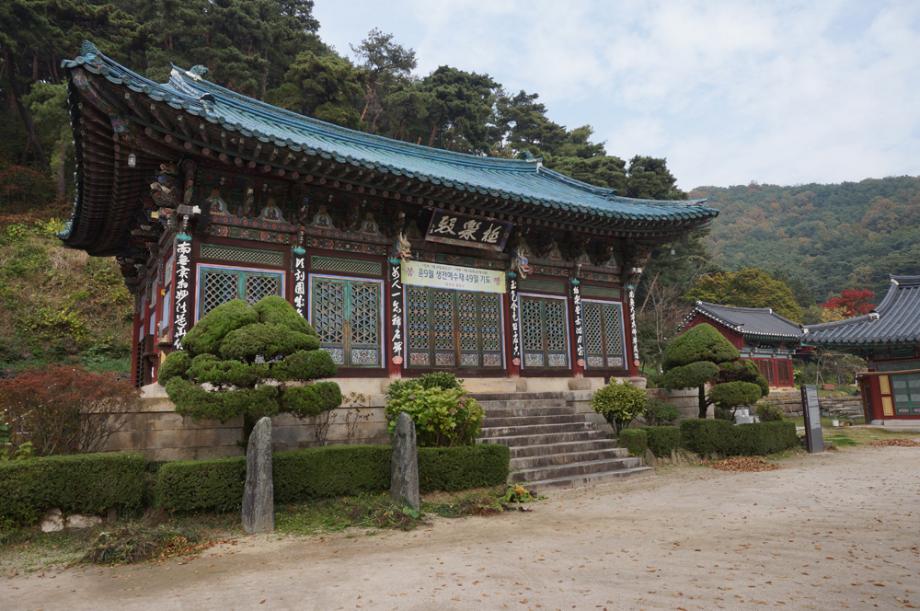

Address : 117-20, Hyangcheonsa-ro, Yesan-eup, Yesan-gun, Chungcheongnam-do
Phone : Hyangcheonsa Temple 041-335-3556
Hyangcheonsa Temple was founded in an alpine area under the Hyangno Peak of Geumosan Mountain by Uigak Sunim in 656 AD (the 16th year of King Uija’s reign over Baekje), but was burnt down during the Imjin War (Japanese invasions of Korea (1592-1598)) and rebuilt by Myeonun Sunim. The temple, however, looks nothing like its original appearance, as the original Geungnakjeon Hall and Cheonbuljeon Hall were demolished and a new hall was built in their place.
- Memorial Stupas of Hyangcheonsa Temple (Chungcheongnam-do Designated Cultural Property No. 179 (May 7, 1984))
- 9-story Stone Pagoda of Hyangangsa Temple (Chungcheongnam-do Designated Cultural Property No. 174 (May 7, 1984))
- Cheonbuljeon Hall of Hyangsangsa (Chungcheongnam-do Designated Cultural Property No. 173 (May 7, 1984))
- The 9-story Stone Pagoda of Hyangangsa Temple, Chungcheongnam-do Designated Cultural Property No. 174, was built as a twin pagoda to honor the second abbot of the temple, Dojang Sunim, but due to severe damage during the Imjin War, the pagoda stones were lost from the fourth level, and only the roof stone remains.
- Enshrined in the two memorial stupas (Uigak, Myeorun) of Hyangcheonsa Temple, Chungcheongnam-do Designated Cultural Property No. 179, and Cheonbuljeon Hall are small Buddha sculptures that are about 15 cm in height made of jade stones by Uigak Sunim, and of the 3,053 Buddha sculptures in different shapes, representing the past, present, only 1,516 Buddhas remain today.
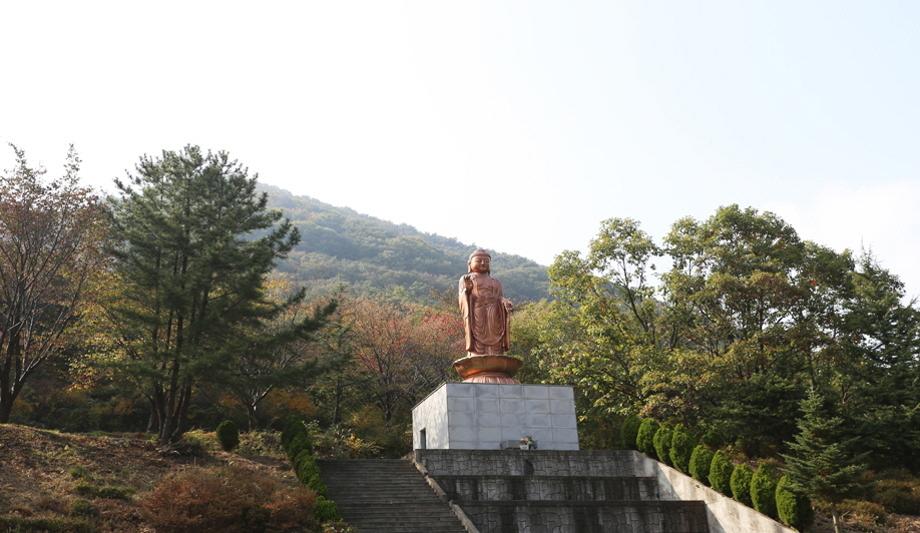

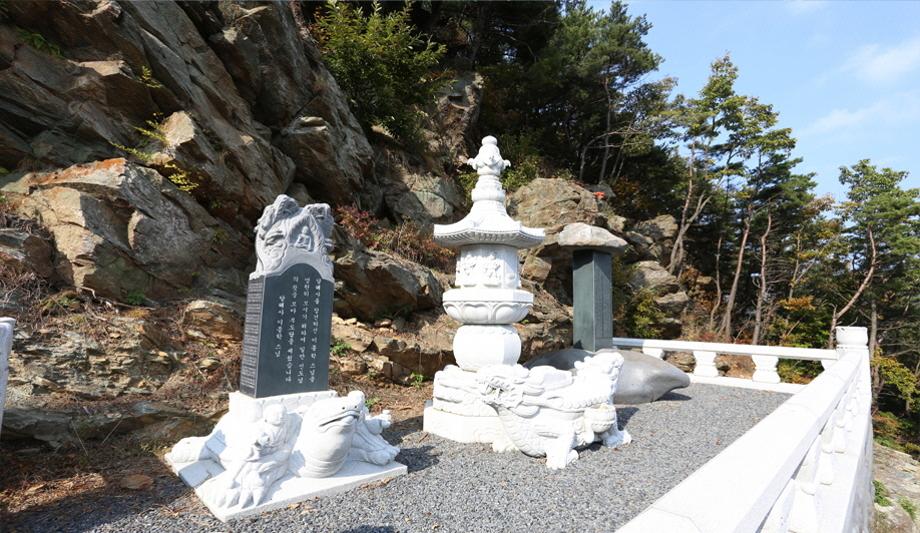
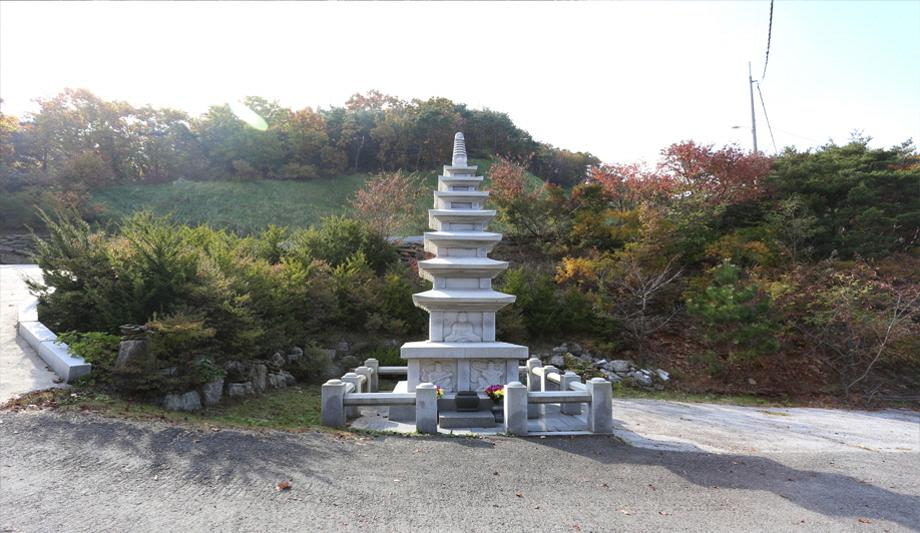
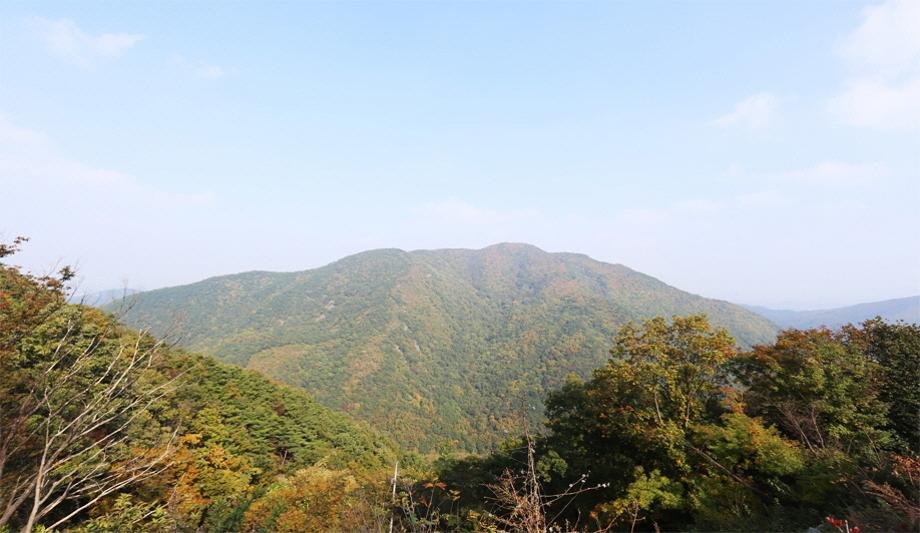
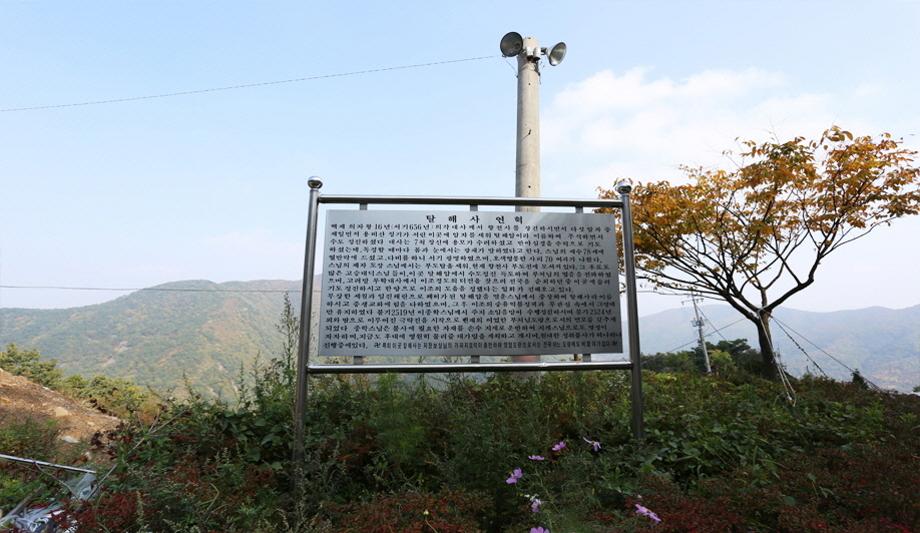
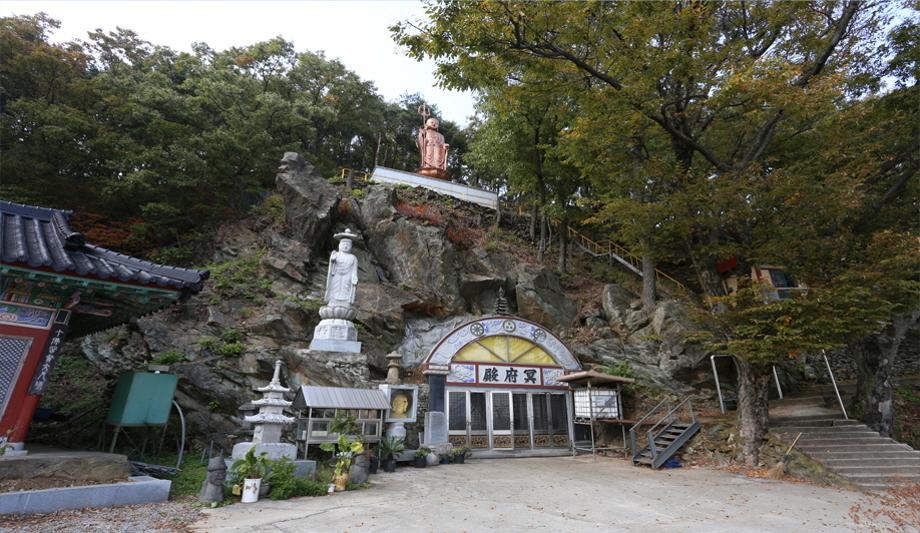
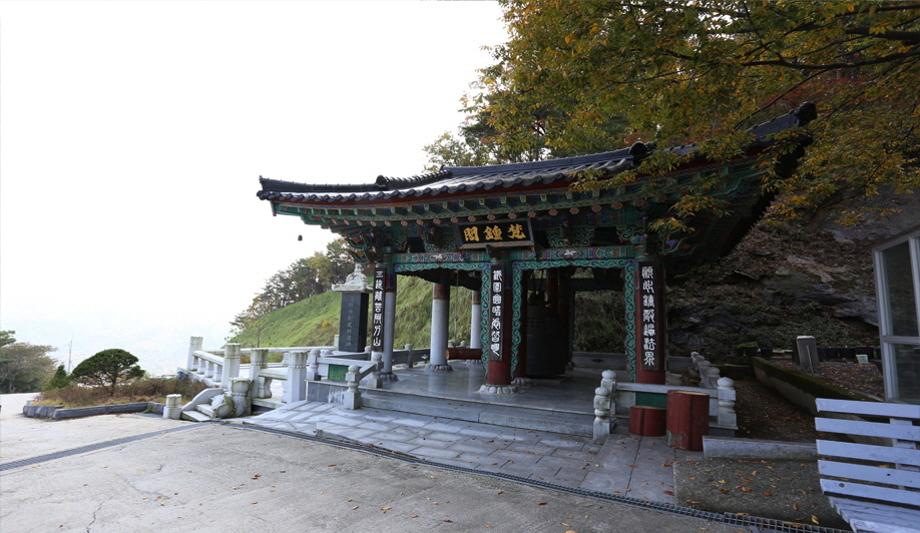
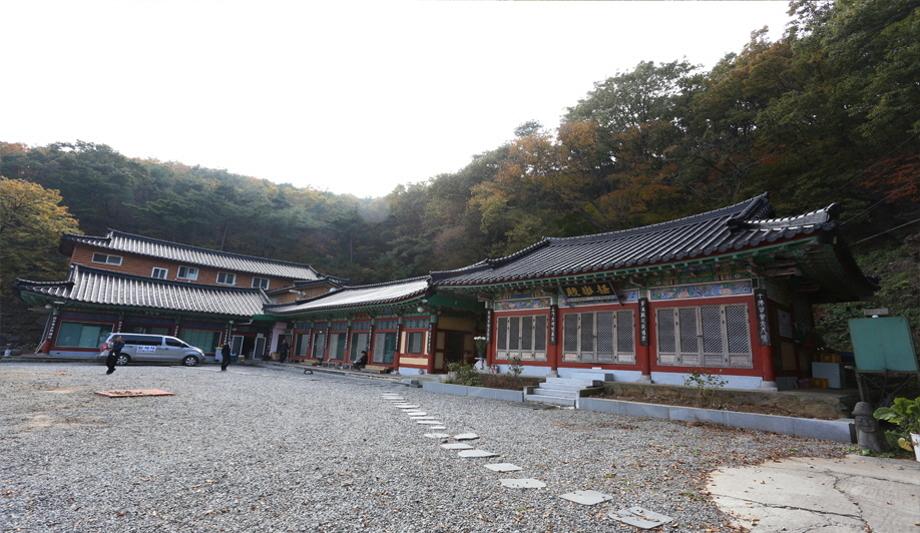

Address : 294-117, Sucheol-gil, Yesan-eup, Yesan-gun, Chungcheongnam-do
Phone : Talhaesa Temple 041-334-7798
Talhaesa Temple, located 0.7 kilometers straight southwest of Sucheol-ri Reservoir, is situated on a hilly area along the ridge at the eastern foot of Yonggulsan Mountain (440 m). Hyangcheonsa Temple was founded more than 1,300 years ago by Uigak Seonsa in the 16th year of King Uija’s reign over Baekje, and the monk stayed under Yongbibong Peak on Yongbisan Mountain, a renowned part of Geumosan Mountain, with the power of Buddha’s teaching. Later, during the Joseon Dynasty, Myeongun Sunim built a sermon hall and named it Talhaesa. Unfortunately, however, it was burned down during the Imjin War (Japanese invasions of Korea (1592-1598)), and it carried on the lamp of Dharma as a hermitage. Then, in the year of Byeongjin, the current abbot, Monk Lee Jong-hak, rebuilt Talhaesa Temple to what it looks like today.
The buildings include Geungnakjeon Hall, Yosachae (living quarters for monks), and Sansingak Shrine, but all of these buildings and the Buddhist statues and sculptures enshrined in the Geungnakjeon Hall were built and made in modern times. The name of the temple means “I have been freed from sin.” It was formerly known as Taraam Heritage, but was later renamed Talhaesa Temple.


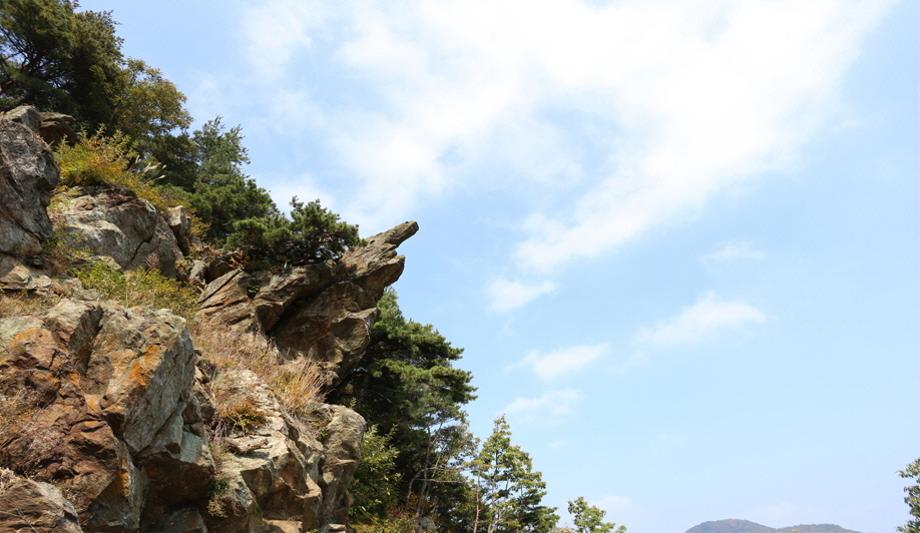
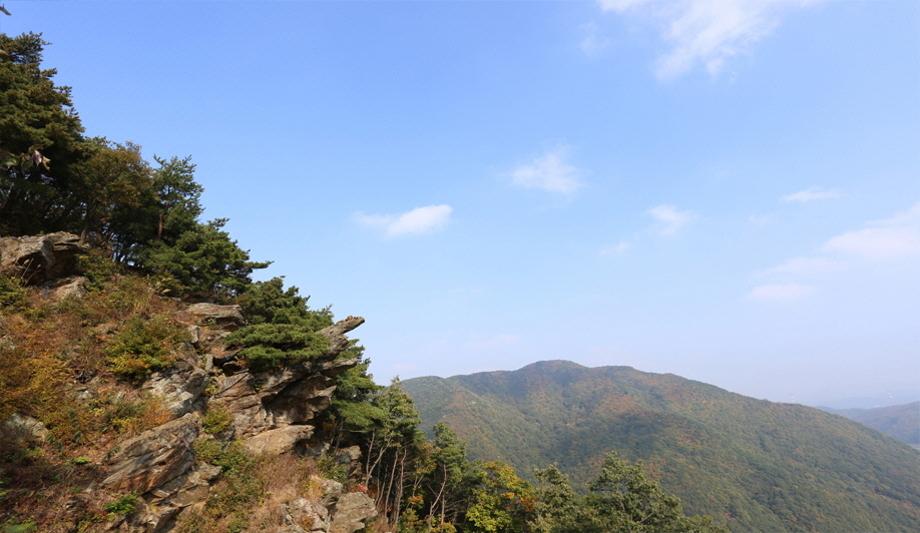
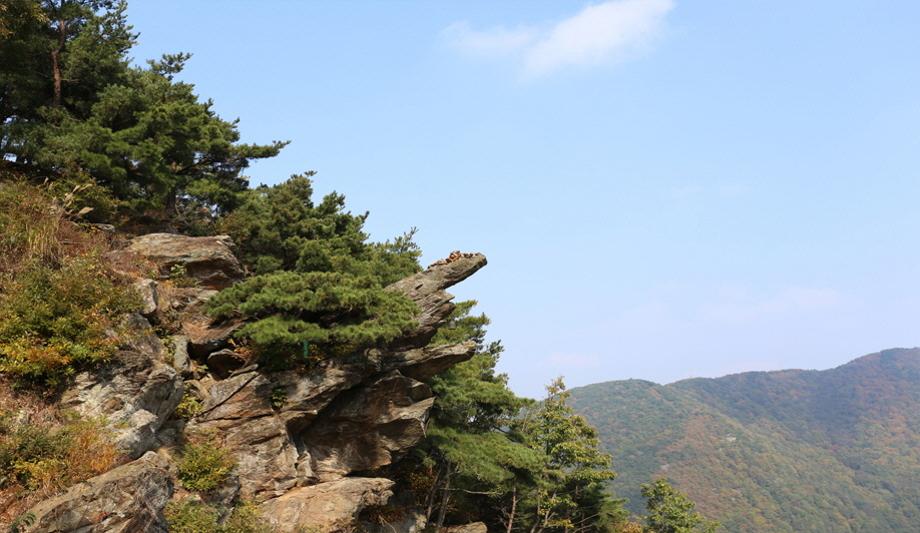
Address : 294-117, Sucheol-gil, Yesan-eup, Yesan-gun, Chungcheongnam-do
Songarak-bawi is located on a steep mountain slope about 50 m northwest of Talhaesa Temple. The rock was named so because it looks like a finger pointing at something from a distance. There are six other names for this rock, including the Jakdaegi-bawi (Stick Rock), Gase-bawi, Soeseo-bawi (Ox Tongue), Swiheunjil-bawi, Jangsuteokgeori-bawi (Pull-up Rock) and Yong-bawi (Dragon Rock).
The name, Jangsuteokgeori-bawi, has an interesting story of origin. Once upon a time, there was a monk at Talhaesa Temple who sent his daughter as a sacrificial offering, but a man of great strength who was practicing martial arts in the mountains was captivated by her beauty upon laying his eyes on her and coveted her. The monk who became aware of this made a bet with him, promising him that he’d give him his daughter’s hand if he could do 100 pull-ups on the tip of a rock. After the 99th pull-ups, however, the man became weak and fell to his death in the valley below. This is why the rock came to be called the Jangsuteokgeori-bawi (Pull-up Rock) and the Swiheunjil-bawi.